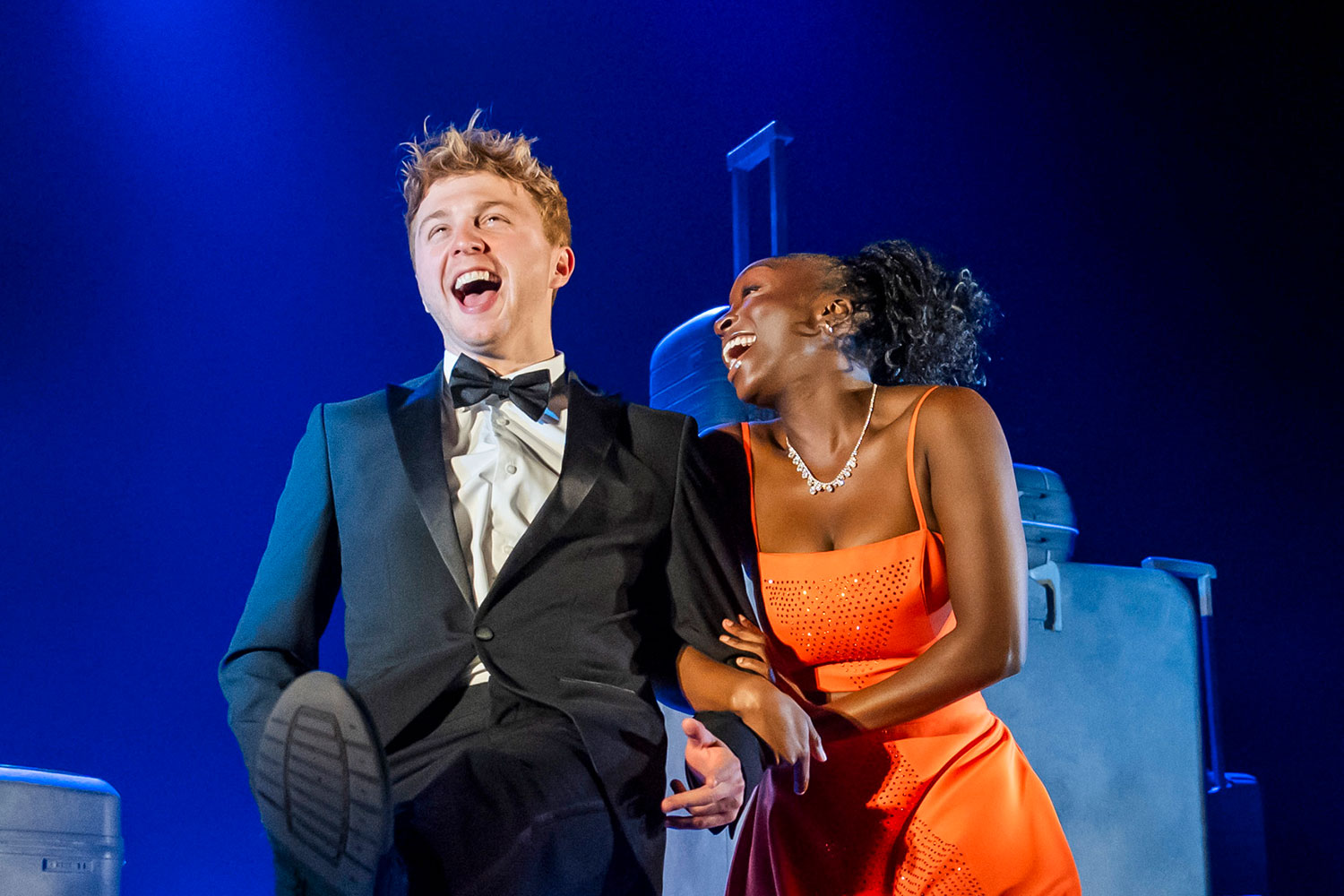Alice in Wonderland (tour – Ely)
Outdoor performances present their own hazards. The audience is often strung out and itself becomes a rival focal point. There are breezes, insects, other people’s picnics and the noise of passing traffic to distract attention unless the story grips and its visual elements intrigue. Cambridge Touring Theatre has in the past worked successfully around these problems but somehow Leon Trayman‘s new production of the John Gardiner dramatisation of Lewis Carroll‘s Alice in Wonderland lacks the requisite magic.
It’s too long for a start, especially the first half. Perhaps today’s small children don’t find Alice’s adventures as fascinating as did their parents and grandparents. Perhaps they’ve never even been read the story, so that the Mad Hatter, the Cheshire Cat, the Queen of Hearts and the Duchess are alien people who don’t fit into a modern child’s context – fantastical or otherwise.
The cast woks extremely hard with Lisa Holliman‘s Alice a good blend of the primly pinafored younger sister and the adventure-seeking know-all. All the other parts are played by just four actors, with Cheryl Felgate as a slinky Cheshire Cat furred in purple and shocking pink (this moggie obviously is dressed by only the best Parisian couture houses) and wielding a variety of accents and gestures as the Dodo, a Gardener and the cockney Gryphon.
Karen Kennedy is a no-nonsense Mouse, March Hare, Cook and Queen of Hearts; when she shouts “Off with his (or her) head!” you really think she means it. Accents are also a strong point with Eli Thorne – a Welsh White Rabbit, a toff Knave of Hearts and a musical conductor of a Dormouse. Barry Evans‘ Mad Hatter is an Italian would-be opera star and his Mock Turtle a lugubrious petulant poseur.
The props designed by Elizabeth Glass use shape to suggest the strange world down the rabbit-hole into which Alice dreams herself. The costumes are bright and clearly differentiate the different characters of the story. Tom Curran accompanies the songs and dances – the Lobster Quadrille is particularly successful – and there’s lots of audience participation. It should all work out splendidly. But somehow it just doesn’t succeed.










